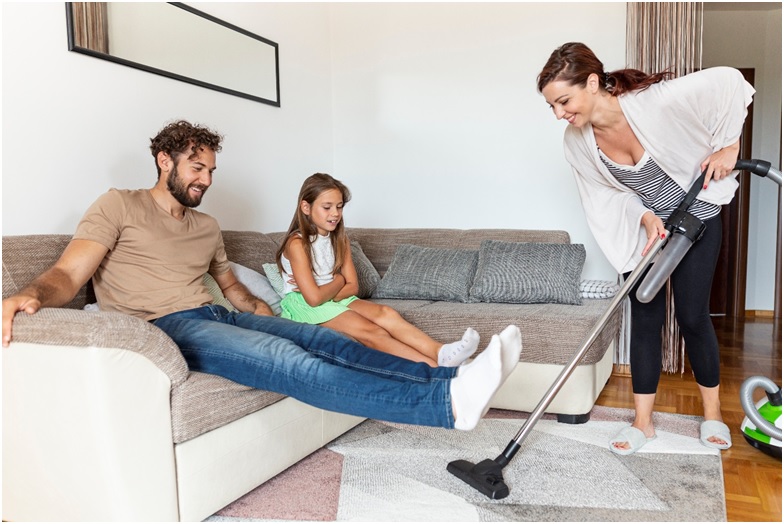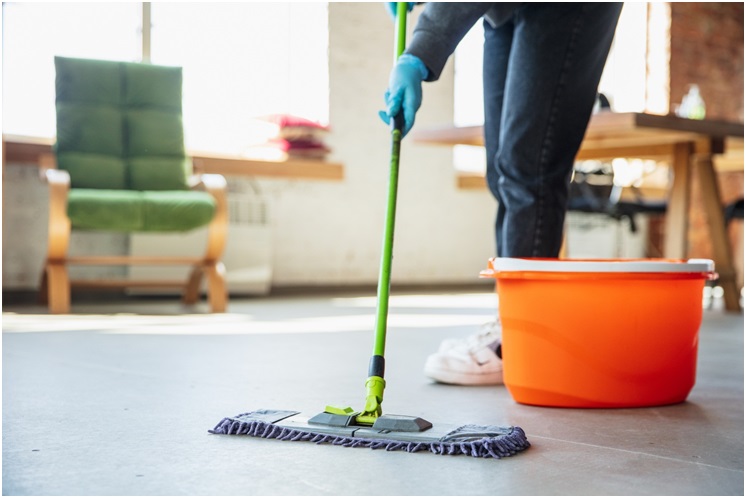The Best Remedies for Cleaning Carpets at Home

Long-haired or short-haired, Persian or modern, it doesn’t matter: cleaning carpets is a delicate operation, especially if done at home. Do not worry, however, because we have collected some tips to help you face it with peace of mind and come back soon to enjoy these splendid furnishing accessories.
Natural methods for cleaning carpets
Having rugs at home means living them. Living them, inevitably, means dirtying them. Before giving in to discouragement and resigning yourself to the extra expense of an industrial wash, however, know that there is more than one natural method to clean carpets. They are cheaper alternatives that allow you to remedy any disaster using items that you may already have at home, or that would cost you very little anyway. The most common are baking soda and vinegar, as cheap as they are miraculous in every daily use.
Clean carpets with baking soda
Cleaning carpets with baking soda is as simple as it is effective. The merit is of its whitening power, which combined with disinfectant and antiseptic properties give a product capable of restoring maximum cleanliness and hygiene to carpets. The procedure to follow is really immediate: just sprinkle some baking soda on the stain and rub lightly. After leaving it to act for a few hours, it is cleaned up with a brush or vacuum cleaner. For periodic cleaning, baking soda can also be sprinkled and left to act on the entire surface of the carpet.
Clean carpets with vinegar
Vinegar is a second valuable ally for cleaning carpets at home, given its disinfectant and peeling properties. For periodic cleaning, you can mix two glasses of white vinegar and three tablespoons of baking soda in a litre of water, and then spray this solution on the surface of the carpet. After brushing lightly, it can be left to dry without spreading it out in the sun. In case of evident stains on not too delicate fabrics, however, it is possible to clean the carpets with white vinegar and coarse salt. They should be mixed in equal parts until you get a pasty mixture to spread, brush gently and then remove
How to clean short-pile rugs
Whether they are antique or modern rugs, short-pile rugs bring fantastic touches of style to any room in the house. To avoid using chemicals or having to resort to industrial dry cleaning, you need to act on the stains gently but as quickly as possible. Also in this case, among the natural remedies, there is no shortage of simple and inexpensive solutions, such as bicarbonate, lemon and Marseille soap. Whichever product you choose from these, the first step is to moisten the carpet with warm water and allow it to be absorbed.
Clean short-pile rugs with baking soda
When the water is completely absorbed, you can proceed with the actual cleaning. Just spread bicarbonate evenly on the stain, let it act for a few minutes and then rub it several times – but gently – using a microfiber or cotton cloth or a non-abrasive sponge. Otherwise, the risk is to ruin the texture of the carpet, creating a visibly more worn area. After working on the stain it is time to remove the baking soda, once again using a delicate brush or a damp cloth.
Clean short-pile rugs with lemon and castile soap
When less precious carpets get dirty, perhaps spread in transit areas, you can act on the stains with two other inevitable products: lemon juice and Marseille soap. Just mix a few drops of both and create a creamy solution, then spread on the stains with a microfiber cloth or a soft sponge. At this point, it is important to start rubbing immediately, because otherwise there is a risk that the solution will be absorbed without acting. Once this phase is completed, the carpet can be rinsed.
How to clean long-pile carpets
The pile carpets suggest an idea instantly heat and intimacy of their home, especially if placed in the living room, at the foot of a sofa or in a child’s room. At the same time, they require great care and attention to stay intact for as long as possible. The good news is that cleaning long-pile carpets with simple, inexpensive and effective remedies is possible. You can act periodically to avoid accumulations of dust or intervene in a more targeted way on stains and encrustations.
Clean long-pile carpets with water
Cleaning a long-pile carpet that is dusty or not too dirty is a fairly quick and painless process. Just fill a bucket of water with a small amount of ammonia and mild soap and dip a broom into it. Then you have to pass it on the carpet in the direction of the pile and against the pile, then again in the direction of the pile, and finally rinse and let it dry. In case of more evident stains, however, it is necessary to start by letting the carpet soak in the same mix of water, ammonia and mild soap. After a few hours, it can be rinsed and dried in the open air, but not in the sun.
Dry clean long-pile carpets
Dry cleaning is certainly more laborious, but at the same time safer for the carpet fibres. To be sure you do a good job, you must first remove as much dust as possible by sweeping it with a broom and spreading it outdoors. At this point, a few tablespoons of baking soda can be spread over the entire carpet – or even just on the stained area – and left to act for a few hours. After this second step, simply sweep the baking soda and roll out the carpet again outdoors to free it from any residues.
How to clean Persian carpets
The richness of Persian rugs can make a difference in furnishing an environment and keeping its splendour unchanged is a delicate task. Those who decide to clean Persian carpets at home must devote themselves to regular maintenance and pay great attention to deeper stain removal operations. Again, it’s good to know that professional options aren’t the only ones available. Indeed, very careful and limited use of ammonia and the delicate action of steam guarantee excellent results, even in the case of do-it-yourself cleaning. But if you don’t want to do it yourself you can call the best carpet cleaning service in Hobart.
Clean Persian carpets with ammonia
Whether ancient or modern carpets, Persian carpets deserve serious consideration at any stage of cleaning with ammonia. First of all, it is necessary to specify that this product should never be sprinkled directly on the carpet, but diluted in plenty of water. A tablespoon of ammonia is enough for three litres of water, which are then used to moisten a soft cloth to rub on the already dusted carpet. Once this operation is complete, the time comes to dry the carpet, which must be spread out in the open air but not under the action of the sun.

Cleaning Persian carpets with steam
Cleaning a Persian carpet with a steam cleaner takes time and patience, but the excellent results pay off. The procedure must be followed with care: first, you need to spray hot water on the entire surface of the carpet to soften the fibres. After a few minutes, you begin to direct short and frequent jets of steam on each area of the carpet, avoiding concentrating too much water at the same point. The operation must be repeated over and over to make sure that, in addition to the dust, even coarser dirt residues go away. Also, in this case, the carpet should be dried out of the sun.
Cleaning other carpets
Not all home rugs can be defined as decorative. Some, such as those made of rubber, have functional value. As they are not furnishing accessories, they can be cleaned without major fear of damaging them, but making sure they are well sanitized is still essential. Among the most common rubber mats in the home are those for children and those made of non-slip rubber placed on the surface of the shower tray.
Clean children’s rubber mats
The rubber mats of children should be cleaned with the same care with which the toys and objects they use most frequently are sanitized. The important thing is to avoid using aggressive products that leave chemical residues on the surfaces. A good way to clean children’s rubber mats is to dust them off, wash them with water and a mild detergent, and dry them in the shade to prevent them from discolouring. Finally, you can use a special sanitizing product with a soft cloth.
How to clean the shower mat
Equally important is to clean the shower mat well, where dirt, mould and limescale can accumulate. Once again, natural remedies are the most useful: the carpet is soaked in water with a few tablespoons of castile soap and scrubbed with a brush. Then add a few tablespoons of baking soda and a glass of white vinegar to remove the encrustations. After 15 minutes, rinse with warm water by brushing vigorously and that’s it. As you can see, little attention is needed for our homes to shine again: we at Hobart Clean Masters know this well.